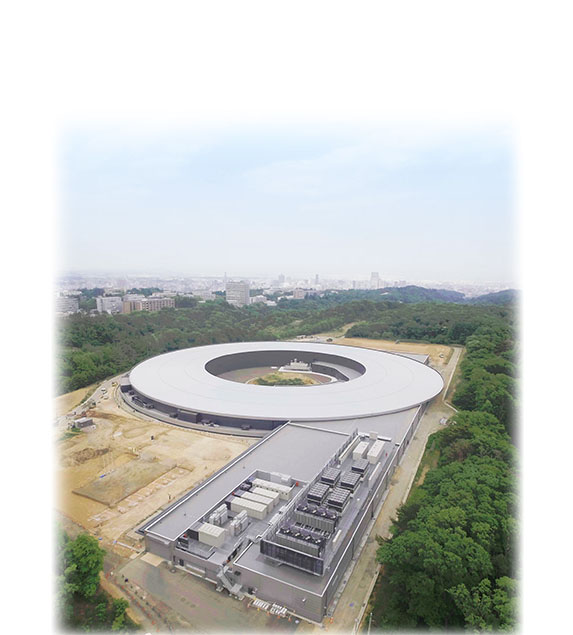Synchrotron Lightsource
What is Synchrotron Radiation?
Synchrotron Radiation is electromagnetic waves such as X-rays
produced by an electron accelerator.
Synchrotron Radiation is highly directional with
small divergence which is defined as high brighrness.
Light invisible to the human eye reveals the function of materials.
Movie of Principle of Synchrotron Radiation Generation
The Next-Generation Synchrotron Radiation Facility NanoTerasu is particularly well suited for the study of matter at nano-scale.
What is the next-generation synchrotron radiation facility, NanoTerasu?
Public-Private Regional Partnerships promoting NanoTerasu.
The next-generation synchrotron radiation facility
satisfies many of the needs in academia and industry.
It will strengthen research capabilities and improve productivity
in our industry, academia, and national research sectors.
This project will be a leading case of a large-scale state-of-the-art research facility
based on public-private regional partnerships.
(December 17, 2018 Press conference by the Minister of Education, Culture, Sports, Science, and Technology.)
[National Agent]
- National Institute of Quantum Science and Technology (QST)
[Partners]
- Photon Science Innovation Center (PhoSIC/General Incorporated Foundation )
- Miyagi prefecture
- Sendai City
- Tohoku University
- Tohoku Economic Federation
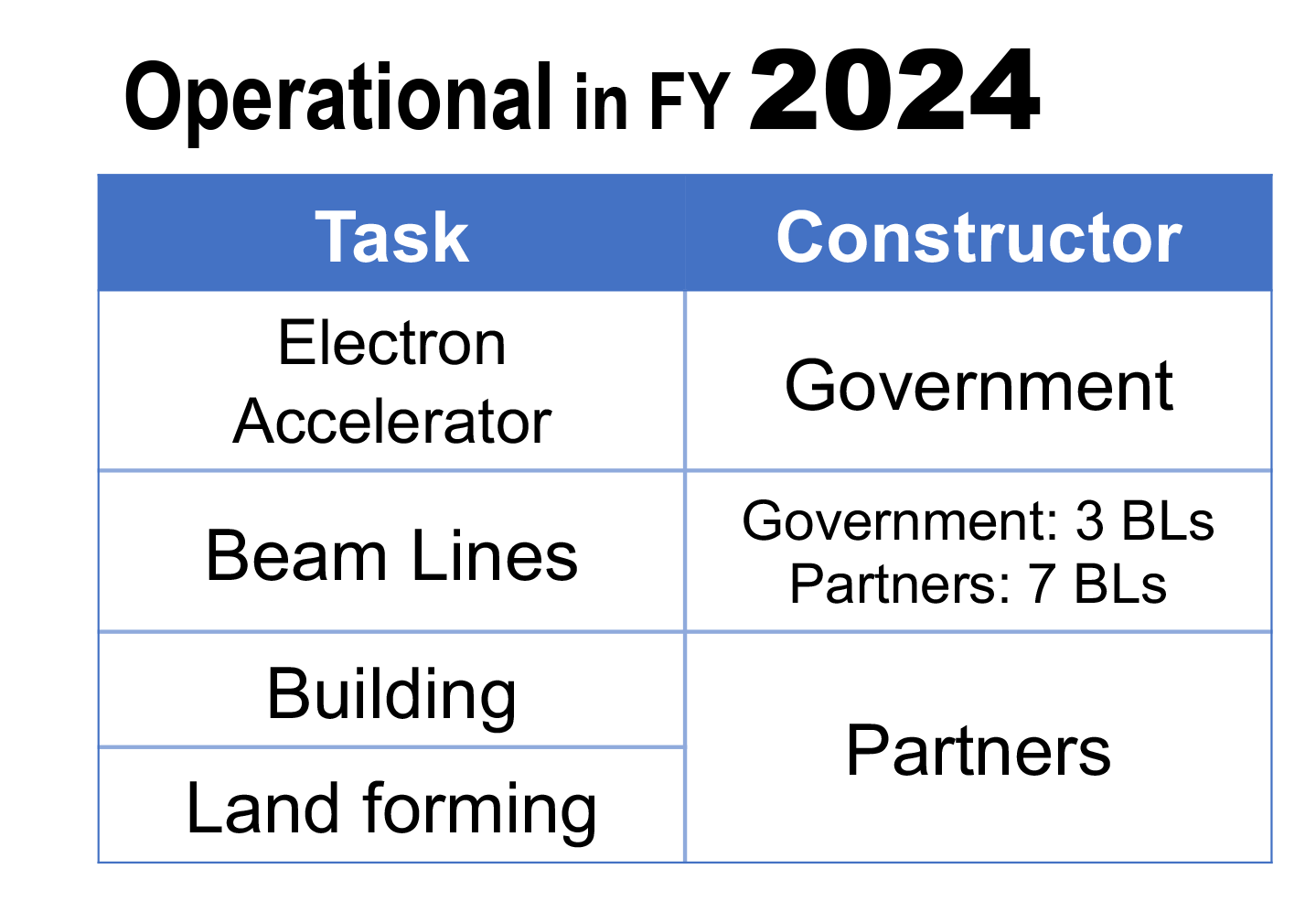
NanoTerasu & Other Light Sources
Light Source Performance
The accelerator, light source, and X-ray optics technologies that Japan has invested in over the years are being used to achieve the excellent performance of "NanoTerasu." in its compact building.
Its higher brilliance and low emittance allows us to 'see' various small objects more clearly and in a shorter time.
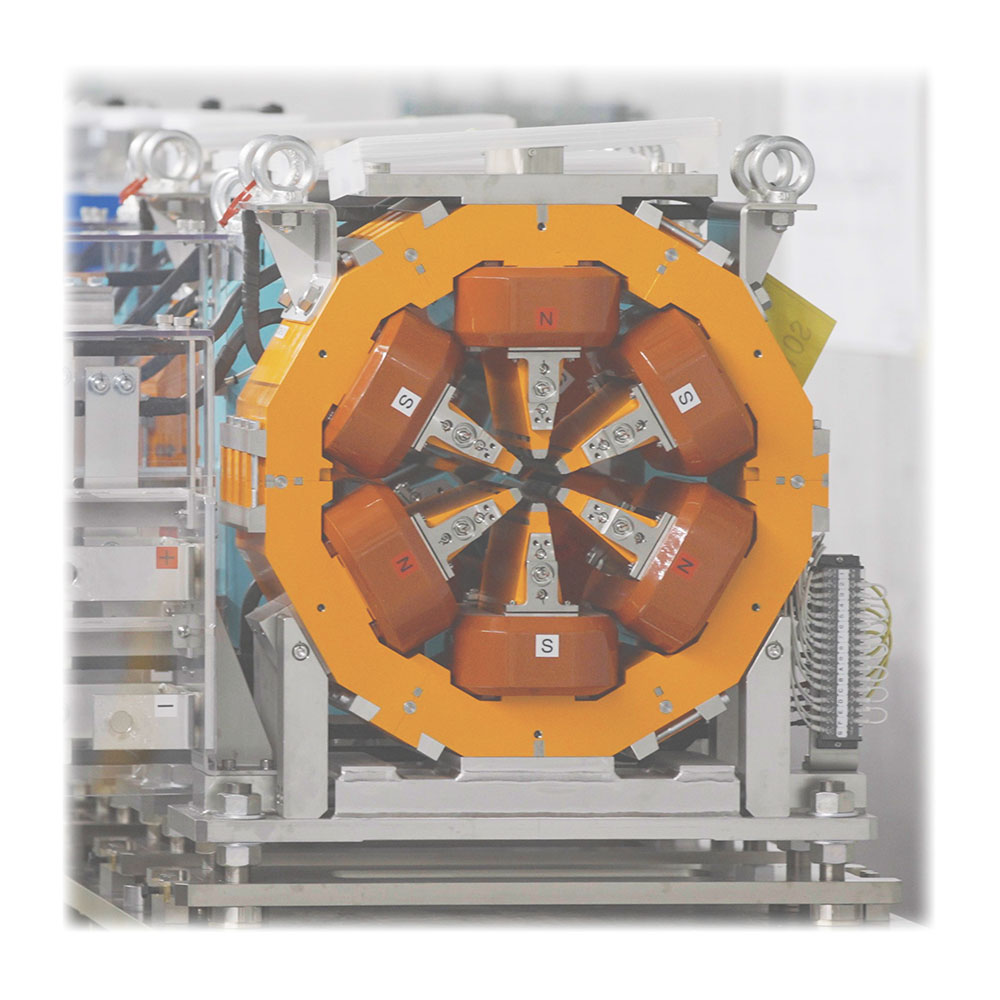
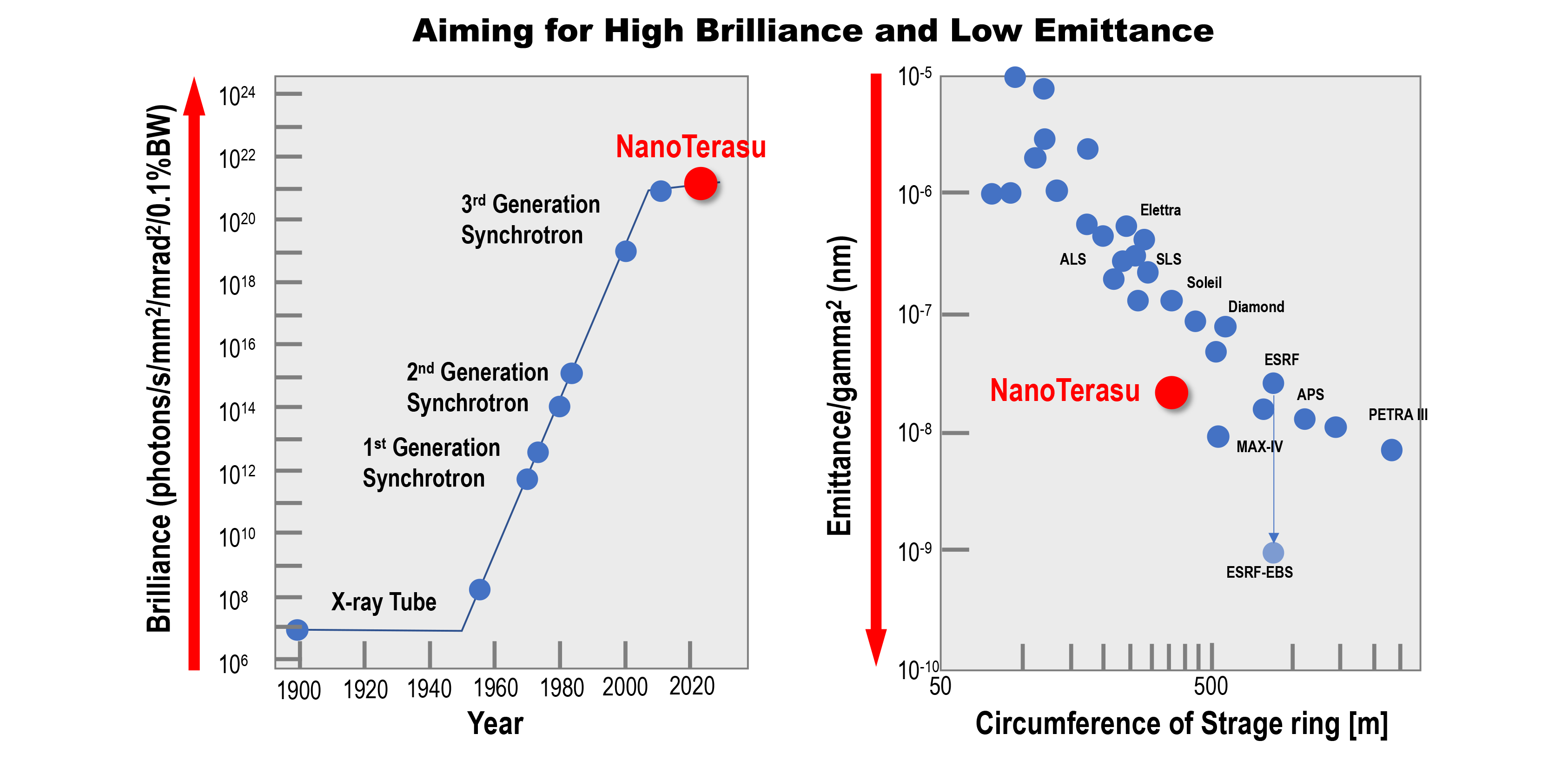
History
Progress and Schedule
- June 2018: Selection of regional partners
- September 2018: Collaboration and cooperation agreement signed between QST and regional partner
- FY2019-: QST starts constructing the accelerator, and the regional partner starts site preparation.
- December 2021: Accelerators were started to be delivered to the building
- June 2022: The facility was nicknamed "NanoTerasu"
- March 2023: Completion of the building
- During FY2023: First beam
- FY2024: Start of operation
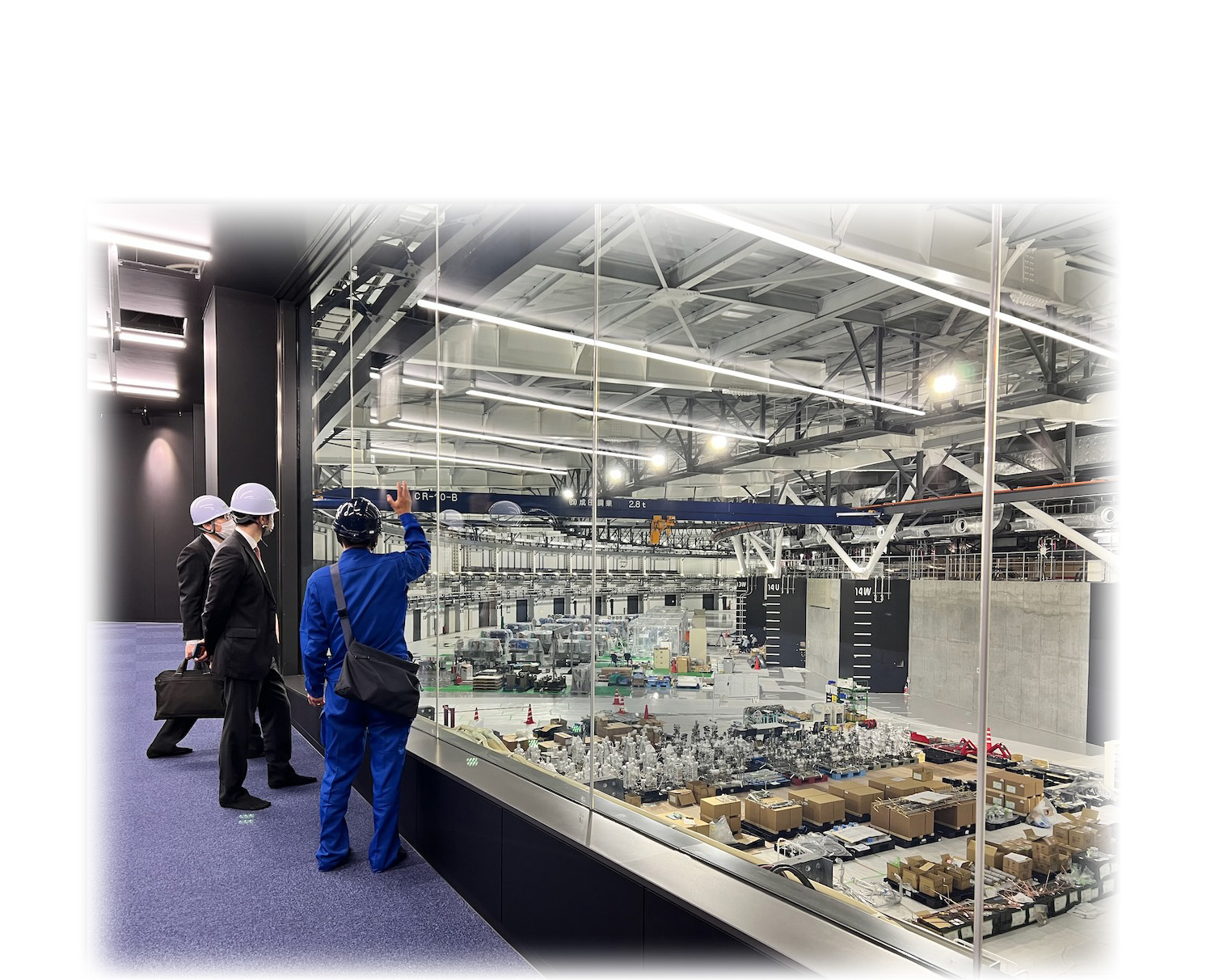
Beamlines
Beamlines
NanoTerasu has the capacity for 28 beamlines.
The national government and partners will install a total of 10 beamlines as the first stage of construction.
[Public Beamlines]
Pioneering the cutting edge of
academic science by taking advantage of the light source performance.
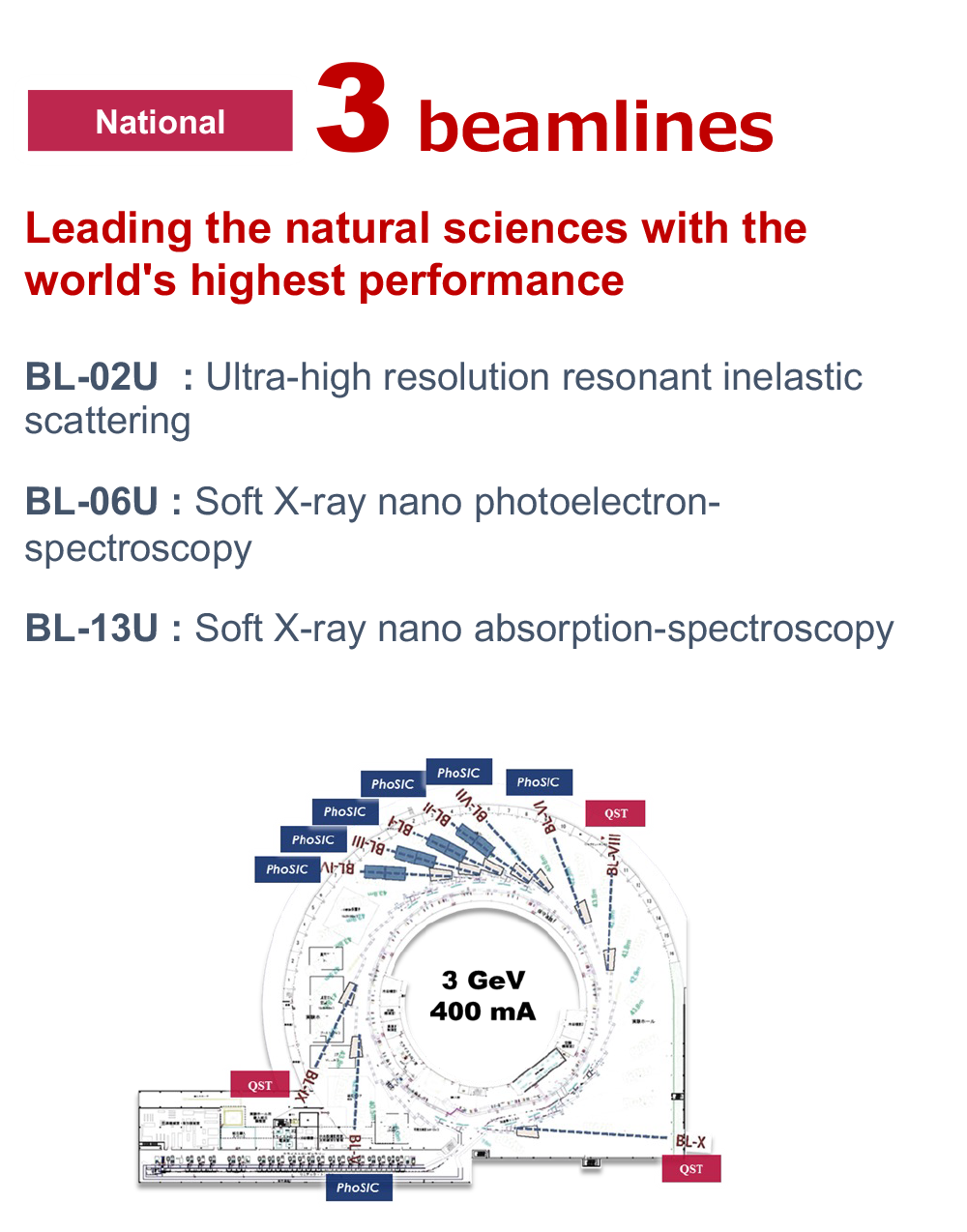
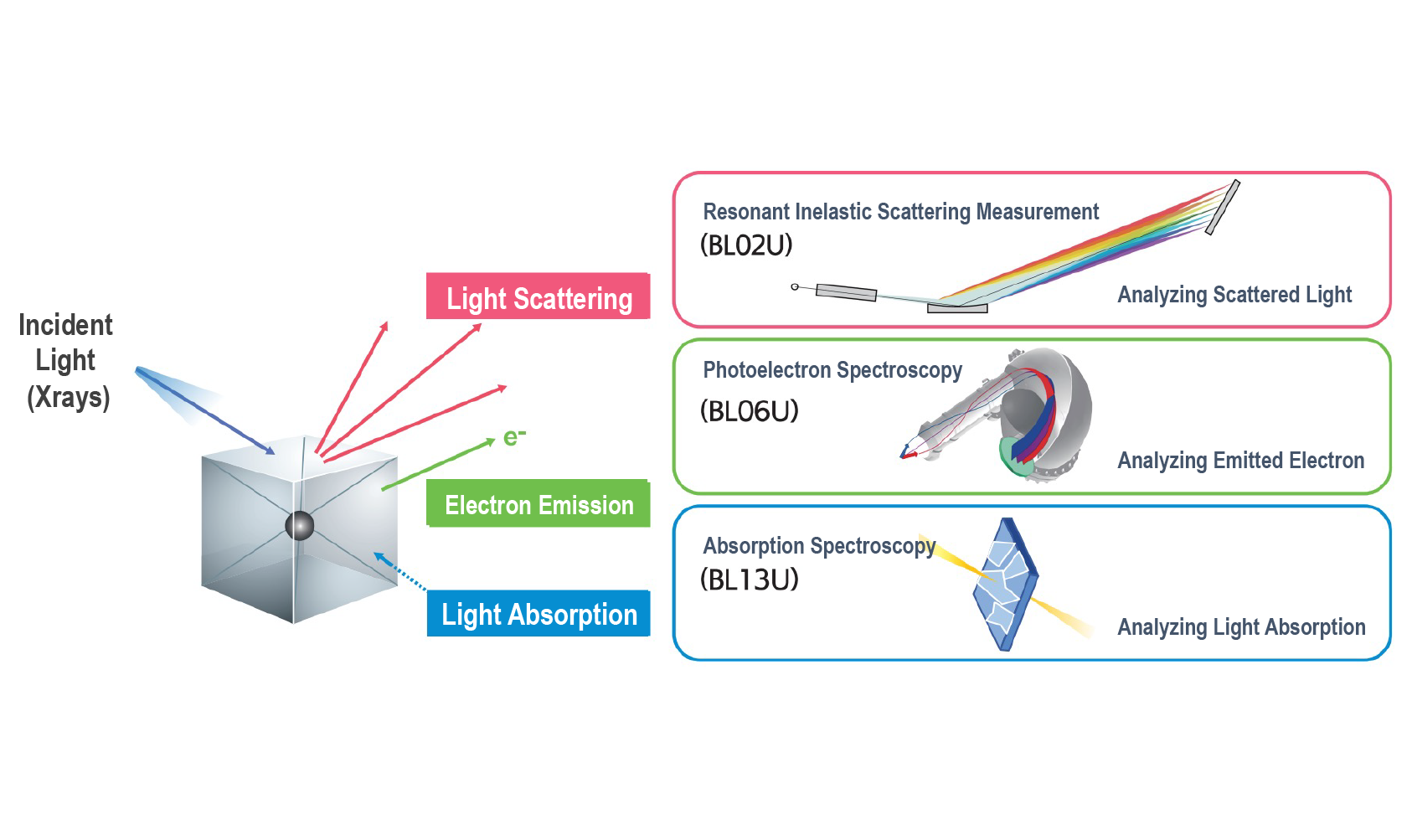
[Coalition Beamlines]
Seven beamlines will support industrial and academic R&D to solve social issues, such as countermeasures against infectious diseases and realizing a decarbonized society.
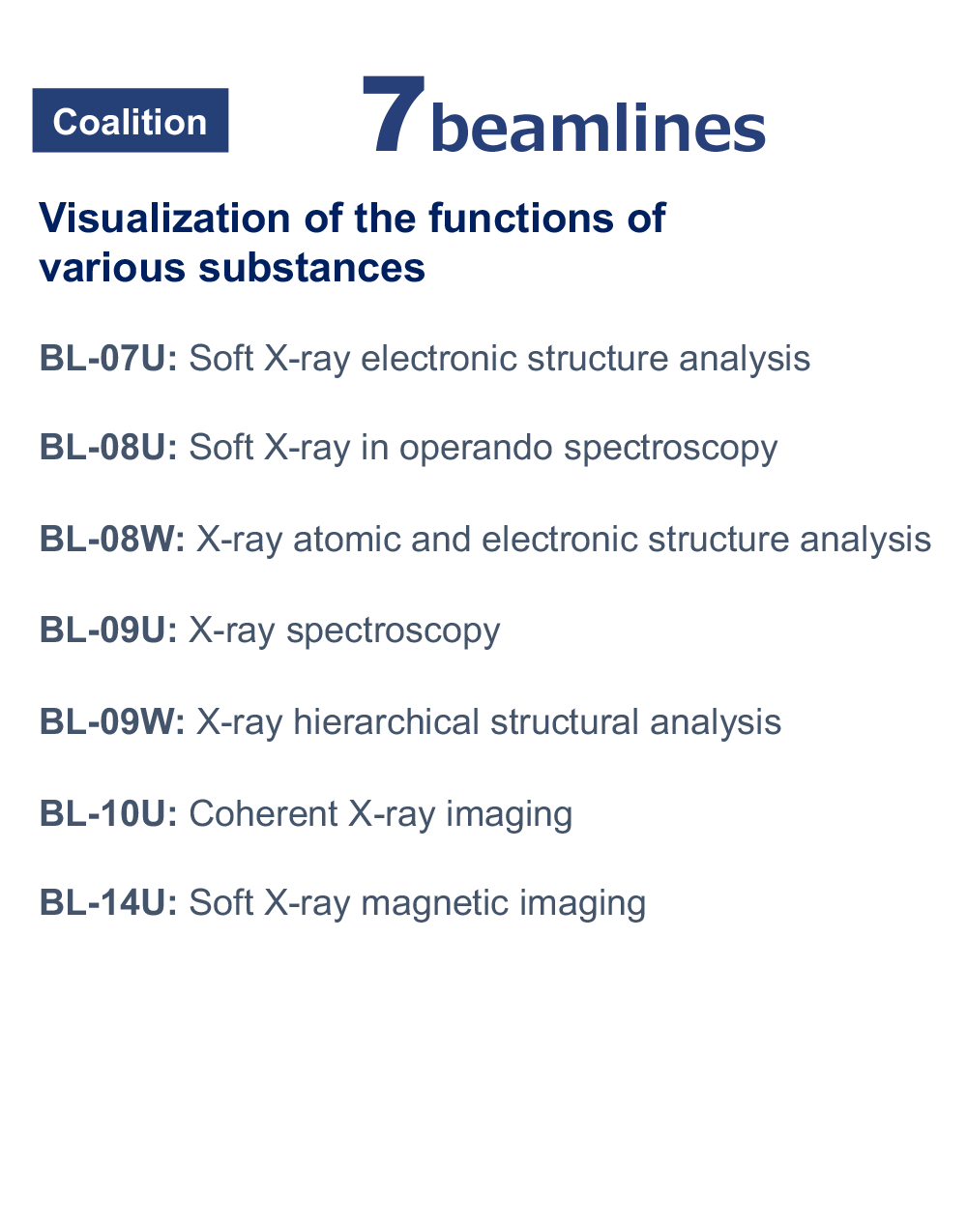
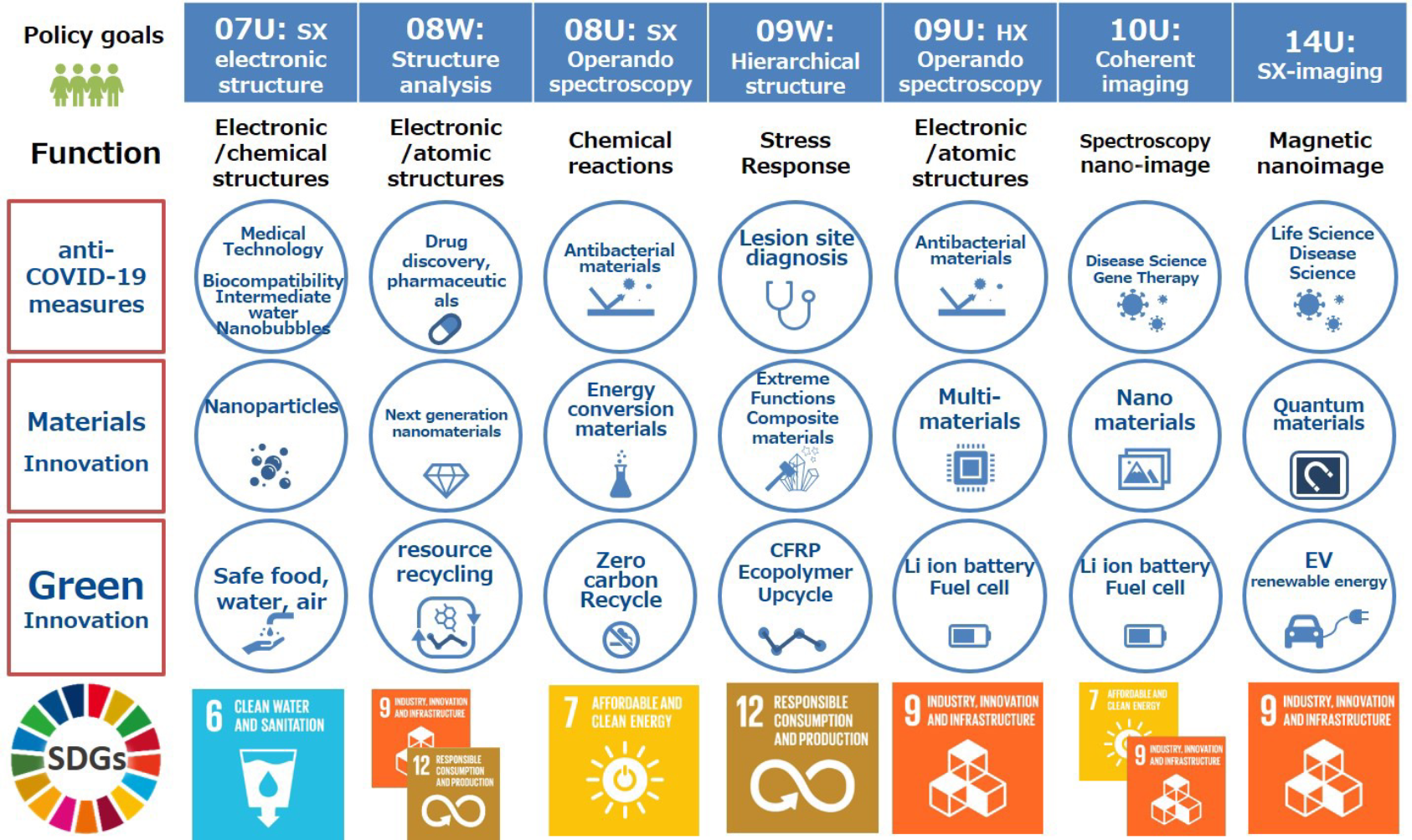
Giant Microscope to Generate Innovation
Possible use cases in various areas (e.g.)
The usefulness of synchrotron light is limited only by our imagination.
Synchrotron radiation science enables us to investigate properties such as elemental distribution, chemical bonding state, electronic state, molecular orientation, and crystal structure distribution. NanoTerasu will accelerate the R&D hypothesis-testing cycle by visualizing the functions of materials and life.
Direct, real-time visualization of the distribution and status of light elements
Realization of food safety and high value-added
- Visualization of the distribution and accumulation process of trace elements in food, visualization of tissue in fruits...
- It is expected to lead to research on nutrients in food products and the establishment of cultivation methods.

Photo by W.Yashiro et.al
Non-destructive quality control checks using high coherence of the light
Visualization of nano-defects inside devices
- Nondestructive visualization of nanoscale wiring defects in the depth direction that cause operational failures
- In addition, by integrating AI technology, it will be possible to diagnose defects that have been difficult to find.
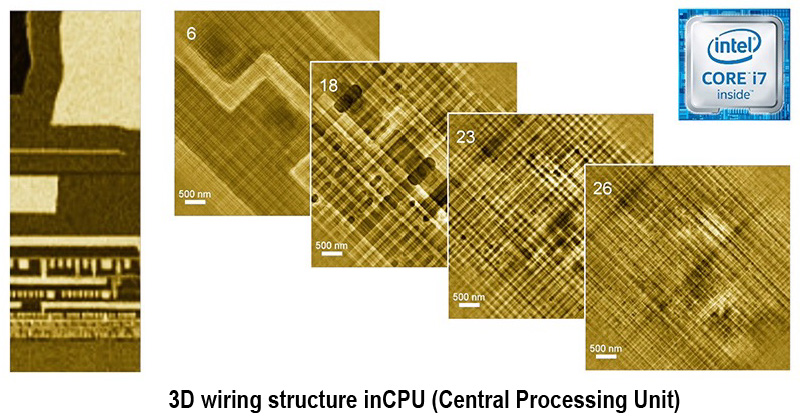
Photo by Y. Takahashi et.al
Visualizing magnetism in materials
Creating Super Strong Magnets
Optimize spintronics memory manufacturing
- Distinguishing between N and S poles in magnet materials leads to the design of high-performance materials (see figure below).
- The electronic state of a 0.8 nm oxide film in a device is analyzed by photoelectron spectroscopy to identify problems in the deposition process.
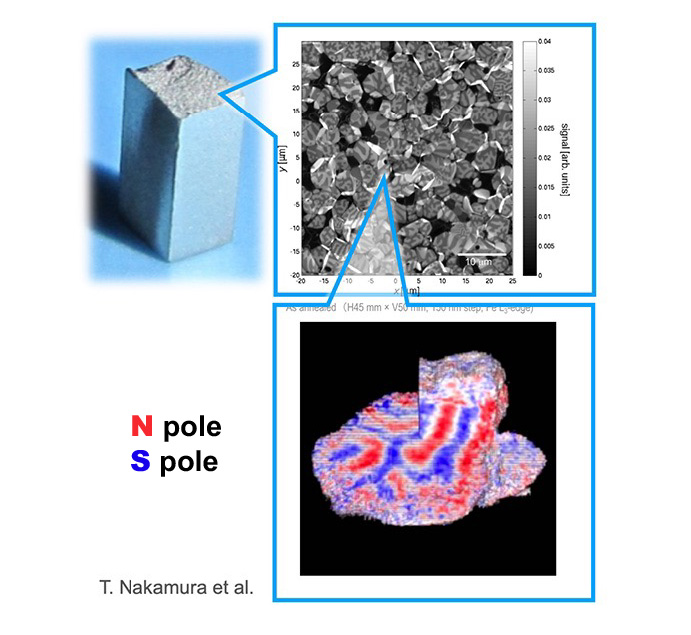
Real-time visualization of changes in electronic states related to the function
In-situ observation of the redox reaction of platinum catalysts in fuel cells
- Observation of the redox reaction of the platinum catalyst inside the fuel cell while generating electricity.
- Developers can reduce costs by identifying factors that cause batteries to deteriorate.

Designing Nanoscale Catalyst Functions
Three-dimensional mapping data of the chemical state of each catalyst particle can be done in a shorter time. Utilizing data science, which handles large volumes of multi-dimensional data, will lead to understanding reaction mechanisms at the nanoscale and functional designs.
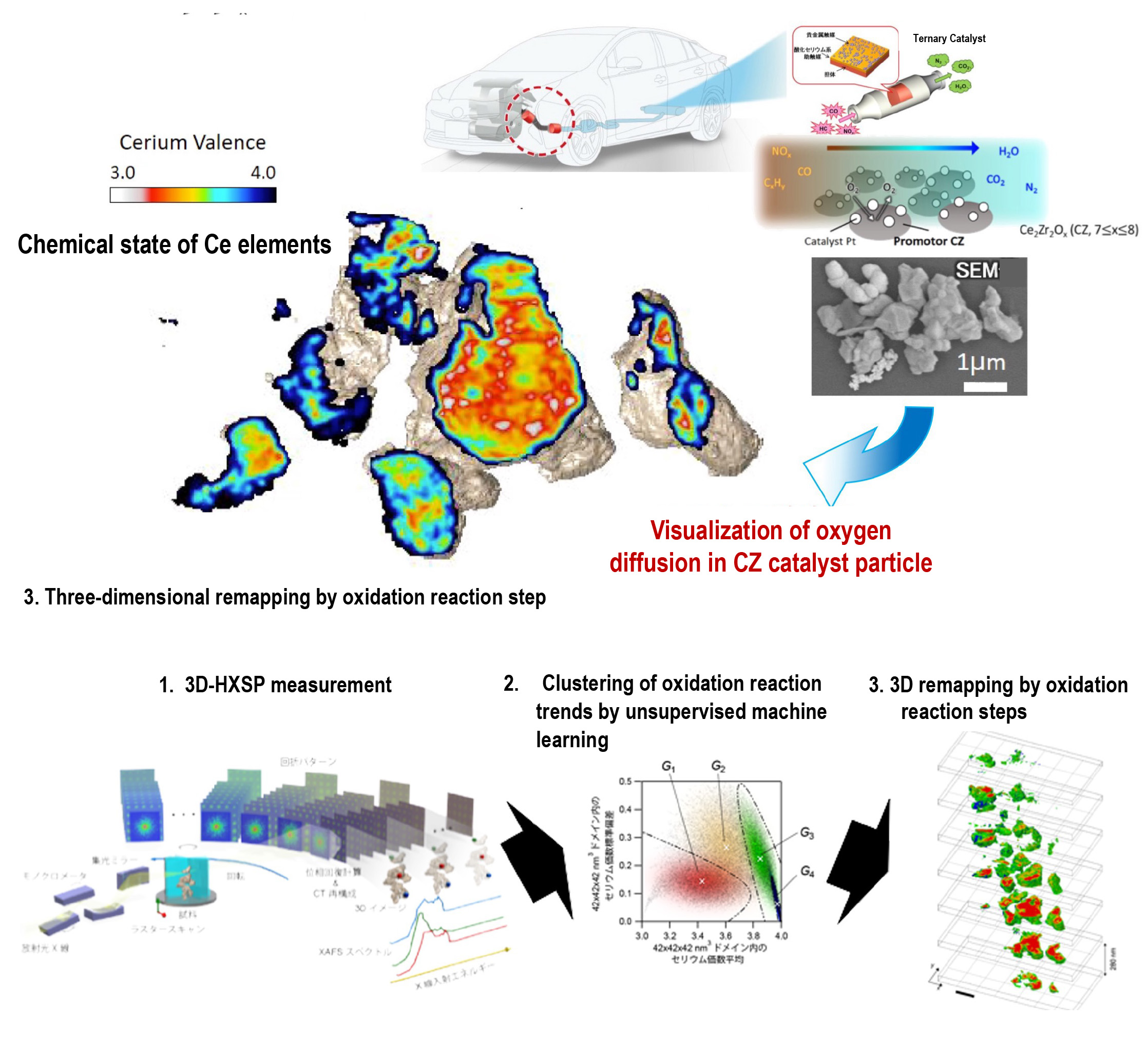
Coutesy of M.Tada and Y.Takahashi et.al
The Science of Breakage and Degradation
Visualizing the dynamics of nanoscale defects to elucidate the mechanisms of breakage and design through the science of breakage and degradation.
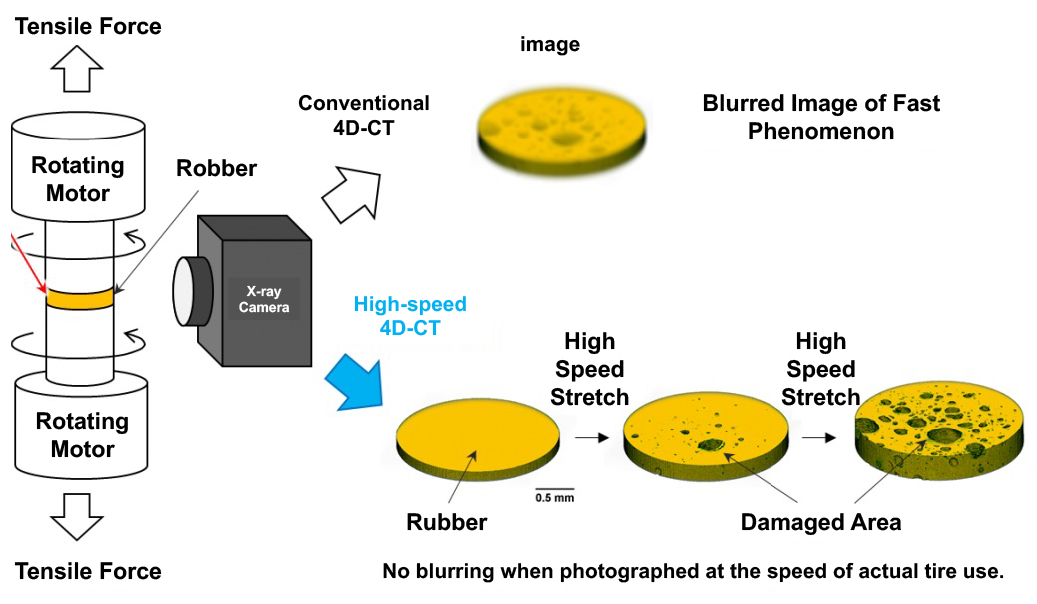
Coutesy of Y.Yashiro et.al

Data-driven, Data as a Boundary Object
Data-Driven, Cyber/Physical Space Connections, and Cross-Disciplinary Integration...
Complex structures heterogeneous, non-stationary, hierarchical, etc.
are intrinsically important to the function of many objects and living things.
NanoTerasu visualizes them and converts them into data.
However, complex and multidimensional data are sometimes beyond human intuitive comprehension.
In such cases, it is crucial to use a data-driven deductive approach using artificial intelligence, such as machine learning to extract the essential parameters.
In addition, inductive approaches such as hypothesis testing in computer will be possible using data as input for simulations.
There are data that only NanoTerasu can obtain.
That is why researchers and engineers gather from different fields across the borders of the public and private sectors.
The power of data-driven fusion of different fields will help solve technologically challenging issues in our society.
NanoTerasu will create a research environment bringing together the public, private, and local sectors.
Let's start Data-driven research with NanoTerasu (image video)
。
Coalition Concept
Regional partners enforce the "Coalition Concept".
When a company or other organization becomes a Coalition Member, it receives the following services.、
- Matchmaking with academia in a variety of fields to form R&D Coalition teams
- Management of information on development within the team
- In competitive areas, sound competition among teams
- In cooperative areas, new collaborations can be established

* In this coalition concept, not only is it possible to utilize next-generation synchrotron radiation through one-to-one industry-academia collaboration, but it is also possible to receive paid support from an analytical company if necessary.
To focus on R&D
- No academic review or submission is required.
- Monthly reservations are possible.
- Members have exclusive access to measurement data and results
- In collaborative areas, new partnerships can be built based on their own needs.
 Assigned concierge in charge to the Coalition member
Assigned concierge in charge to the Coalition member
- Matching for team formation
- Research consultation
- Projectization of Research
- Consultation on Beamline Utilization
- Reservations and Procedures Guide
Ecosystem
Toward a Novel Research Complex Formation
Creation of an innovation ecosystem
that encourages the integration of different fields by bringing together
a diverse range of industries and academia.
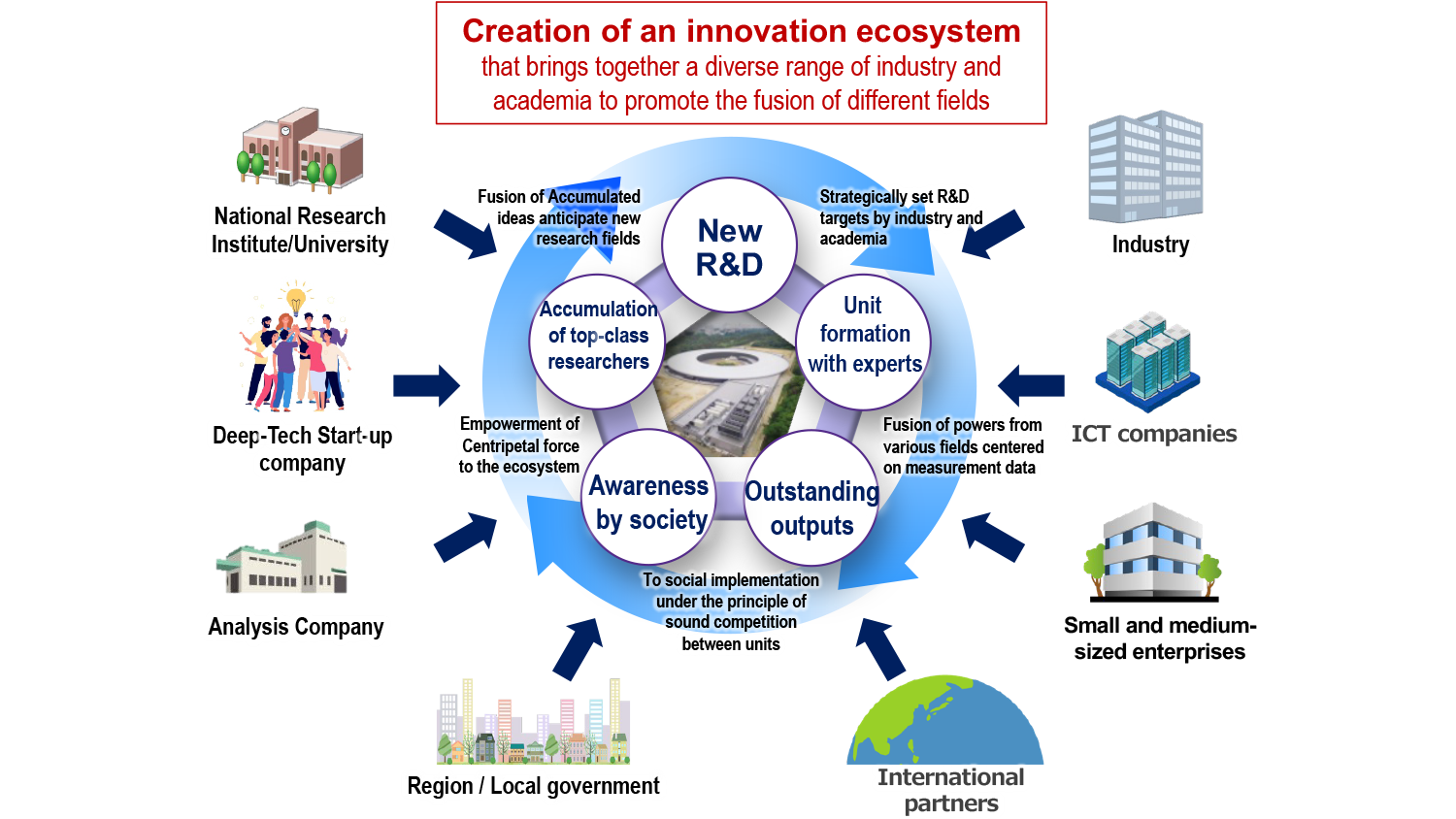
Site Information
Access
Within 2 hours from Tokyo and Kansai metropolitan areas
- 5 km west of Sendai Station
- 9 min. from Sendai Station to Aobayama Subway Station
- Sendai Airport, Sendai Port, and Sendai-Miyagi Interchange on Tohoku Expressway are all within 15 km.
- Located on the Tohoku University Aobayama new campus
- "Science Park," where companies and other academic institutions can set up their bases, is also available nearby NanoTerasu.
- Itami(Osaka)-Sendai: 75 min.
- Fukuoka-Sendai: 110 min.
- Shin Chitose-Sendai: 70 min.
- Tokyo-Sendai + Sendai-Aobayama: 90 + 9 min.
- SendaiAirpot-Sendai + Sendai-Aobayama: 25 + 9 min.

Science Park

